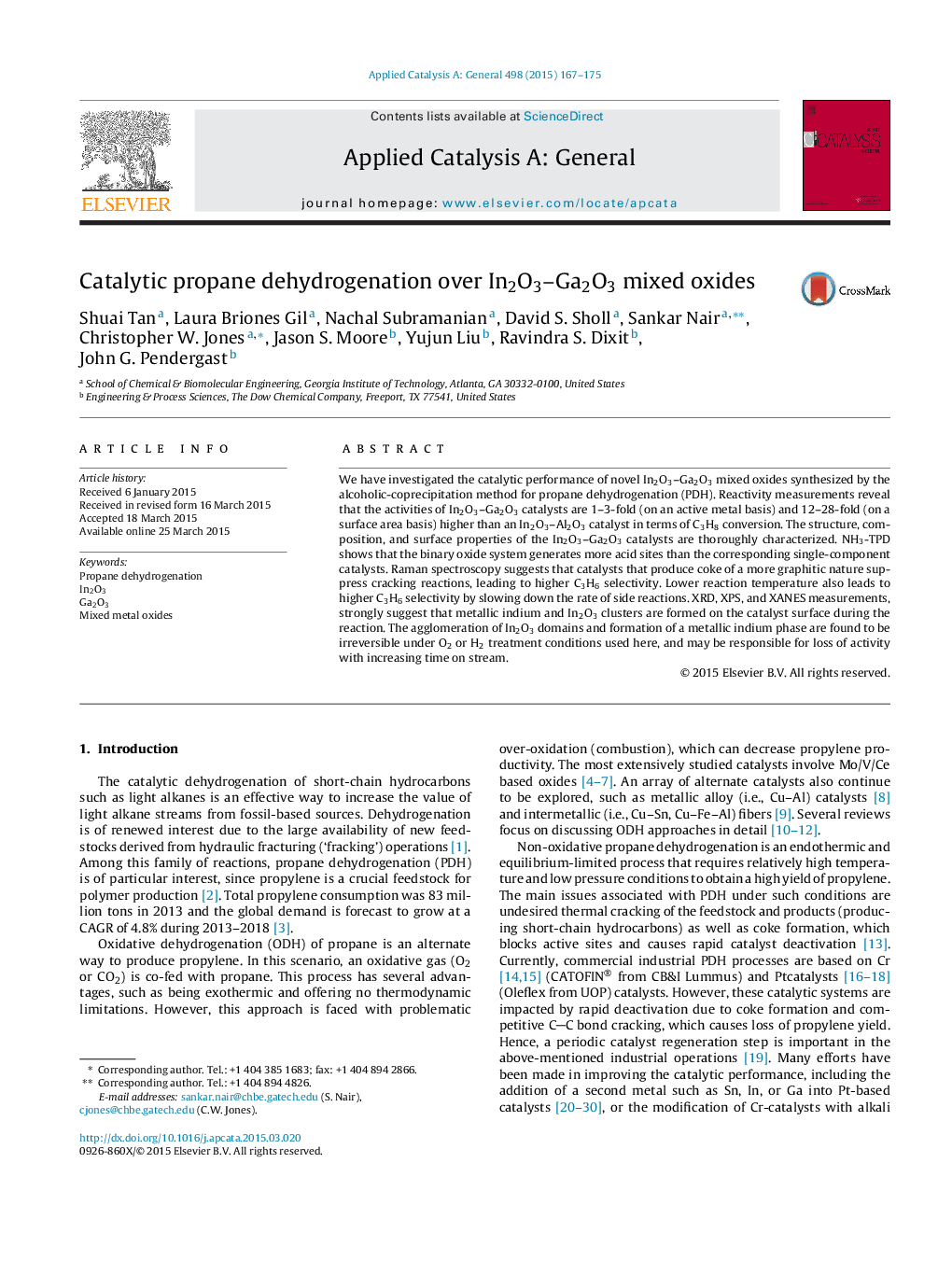| Article ID | Journal | Published Year | Pages | File Type |
|---|---|---|---|---|
| 39129 | Applied Catalysis A: General | 2015 | 9 Pages |
•In2O3–Ga2O3 mixed oxides were employed in propane dehydrogenation (PDH).•In–O–Ga linkages improve the dispersion and reducibility of In2O3 domains.•The activities of resulting catalysts are an order of magnitude higher than In2O3–Al2O3.•Agglomeration of In2O3 and formation of In0 may be responsible for loss of activity.
We have investigated the catalytic performance of novel In2O3–Ga2O3 mixed oxides synthesized by the alcoholic-coprecipitation method for propane dehydrogenation (PDH). Reactivity measurements reveal that the activities of In2O3–Ga2O3 catalysts are 1–3-fold (on an active metal basis) and 12–28-fold (on a surface area basis) higher than an In2O3–Al2O3 catalyst in terms of C3H8 conversion. The structure, composition, and surface properties of the In2O3–Ga2O3 catalysts are thoroughly characterized. NH3-TPD shows that the binary oxide system generates more acid sites than the corresponding single-component catalysts. Raman spectroscopy suggests that catalysts that produce coke of a more graphitic nature suppress cracking reactions, leading to higher C3H6 selectivity. Lower reaction temperature also leads to higher C3H6 selectivity by slowing down the rate of side reactions. XRD, XPS, and XANES measurements, strongly suggest that metallic indium and In2O3 clusters are formed on the catalyst surface during the reaction. The agglomeration of In2O3 domains and formation of a metallic indium phase are found to be irreversible under O2 or H2 treatment conditions used here, and may be responsible for loss of activity with increasing time on stream.
Graphical abstractFigure optionsDownload full-size imageDownload high-quality image (91 K)Download as PowerPoint slide
